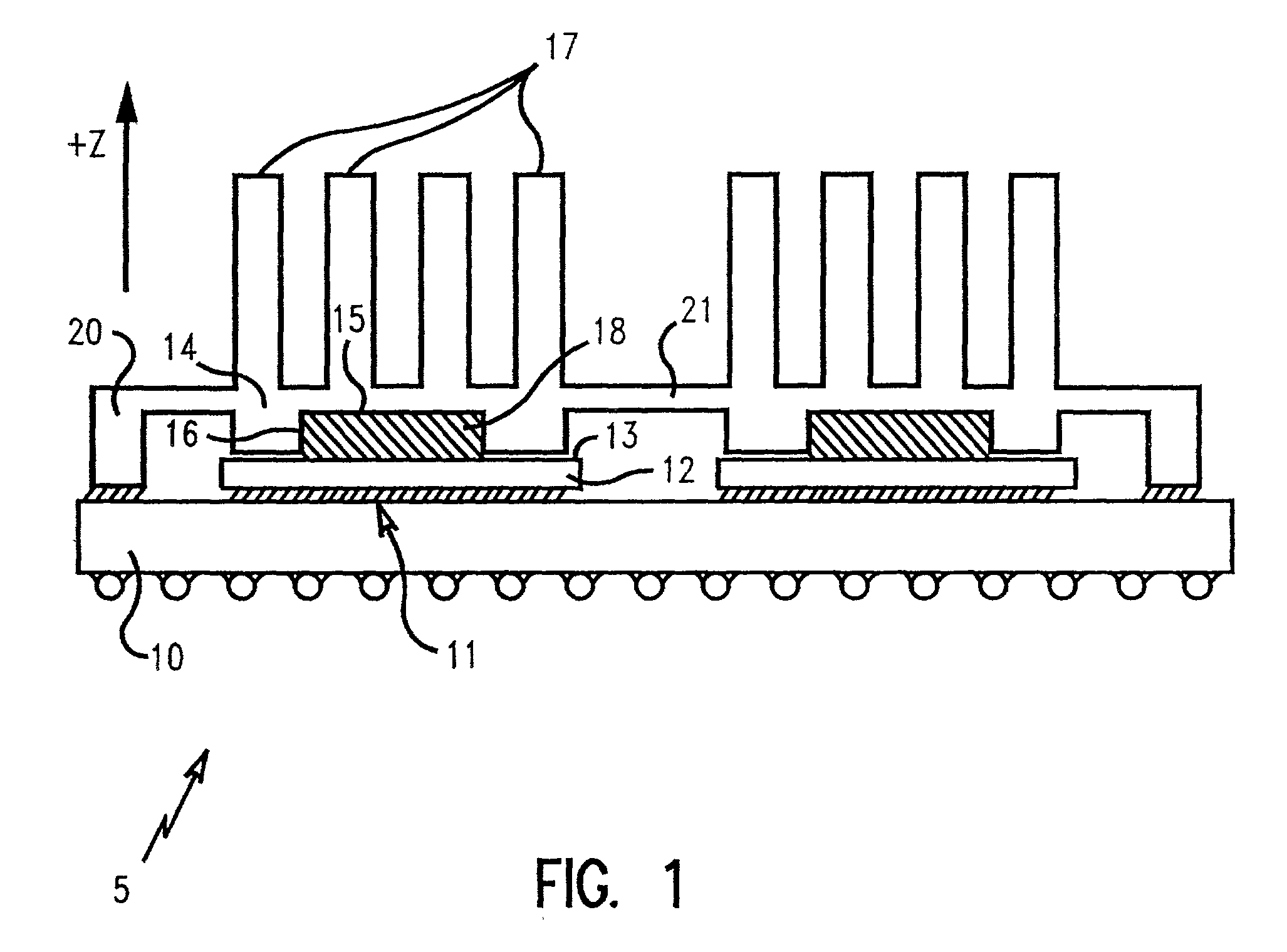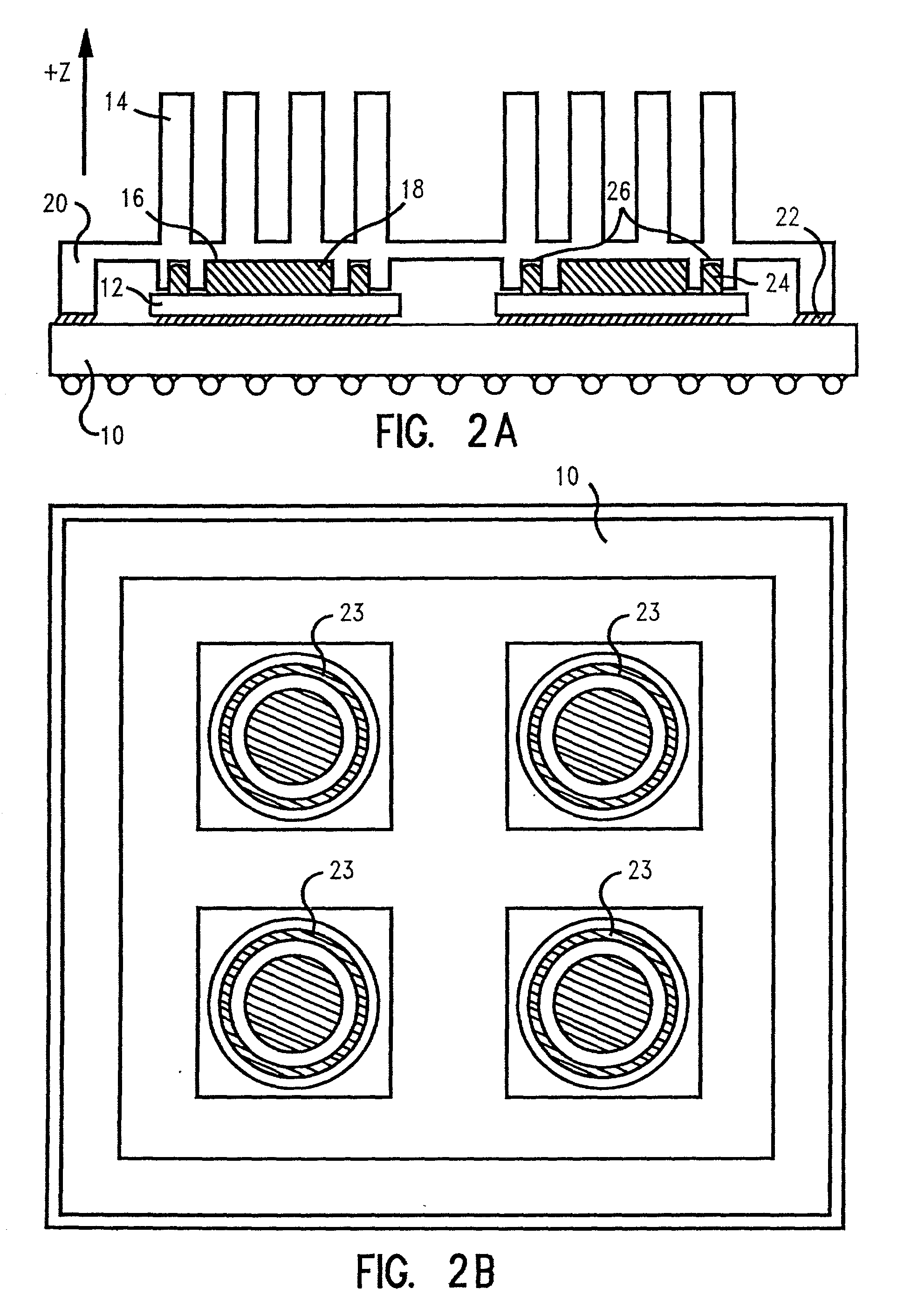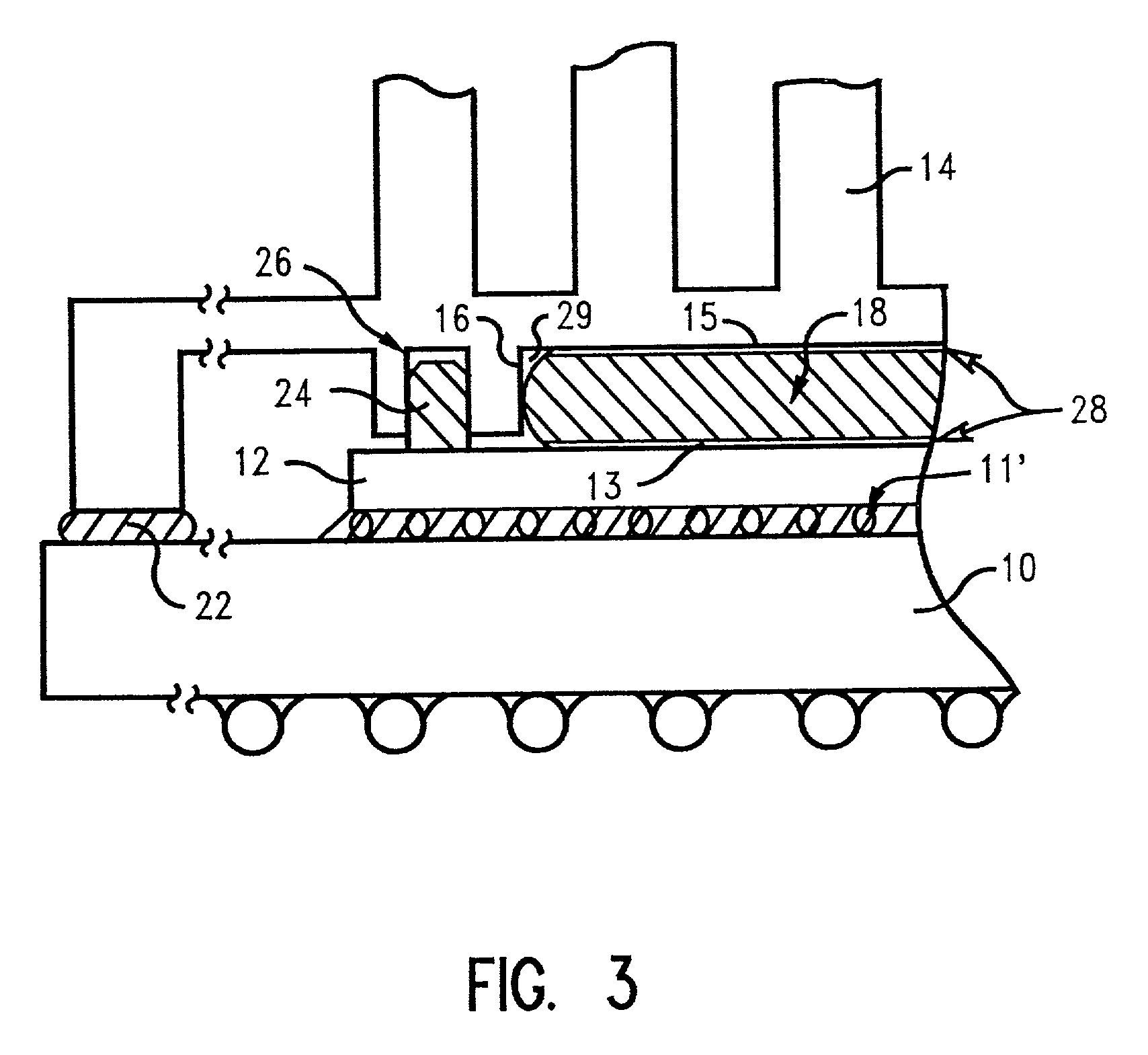Thermal enhancement approach using solder compositions in the liquid state
a technology of liquid state and composition, applied in the direction of semiconductor devices, semiconductor/solid-state device details, electrical devices, etc., can solve the problems of insufficient power dissipation, inability to efficiently dissipate heat energy, and inability to meet the much higher power allotment being contemplated for future designs, so as to minimize the mismatch between the chip, the interfacing thermal conducting material, and the associated heat exchanger
- Summary
- Abstract
- Description
- Claims
- Application Information
AI Technical Summary
Benefits of technology
Problems solved by technology
Method used
Image
Examples
Embodiment Construction
)
[0064] In describing the preferred embodiment of the present invention, reference will be made herein to FIGS. 1-5 of the drawings in which like numerals refer to like features of the invention. Features of the invention are not necessarily shown to scale in the drawings.
[0065] In order to mitigate the adverse effects of thermal mini-cycles on the heat transfer properties of integrated circuit chips and their associated heat exchangers, a solder is introduced to interface between an IC chip and its associated heat exchanger. The solder composition has a solidus-liquidus temperature range that encompasses the IC chip operational temperature range. Thus, the solidus temperature is less than or equal to the IC chip's lowest operating temperature, and the liquidus temperature is greater than or equal to the IC chip's highest operating temperature. Consequently, the solder is always in the semi-molten state while power is applied to the IC chip, including when the IC chip is in a dorman...
PUM
 Login to View More
Login to View More Abstract
Description
Claims
Application Information
 Login to View More
Login to View More - R&D
- Intellectual Property
- Life Sciences
- Materials
- Tech Scout
- Unparalleled Data Quality
- Higher Quality Content
- 60% Fewer Hallucinations
Browse by: Latest US Patents, China's latest patents, Technical Efficacy Thesaurus, Application Domain, Technology Topic, Popular Technical Reports.
© 2025 PatSnap. All rights reserved.Legal|Privacy policy|Modern Slavery Act Transparency Statement|Sitemap|About US| Contact US: help@patsnap.com



